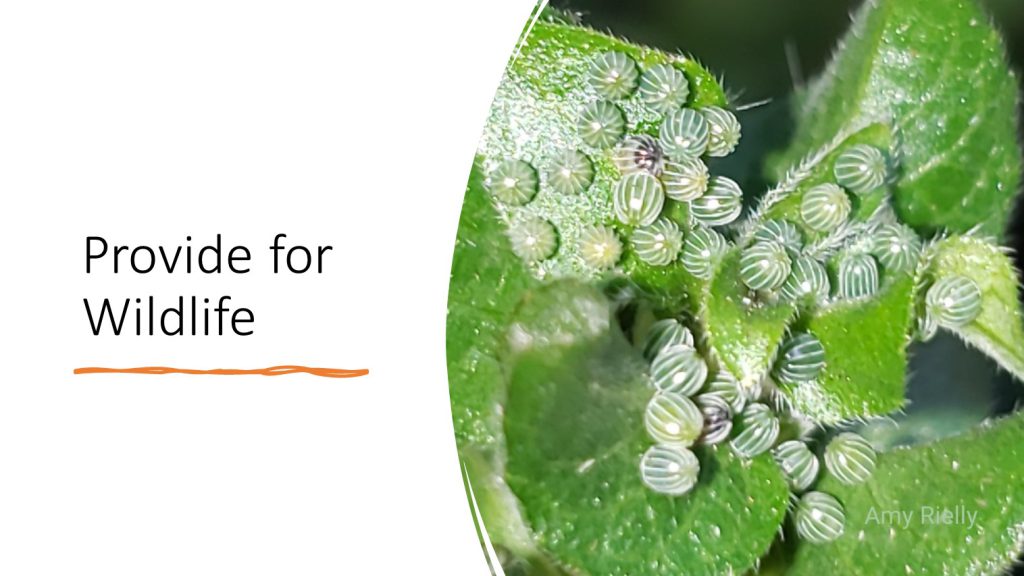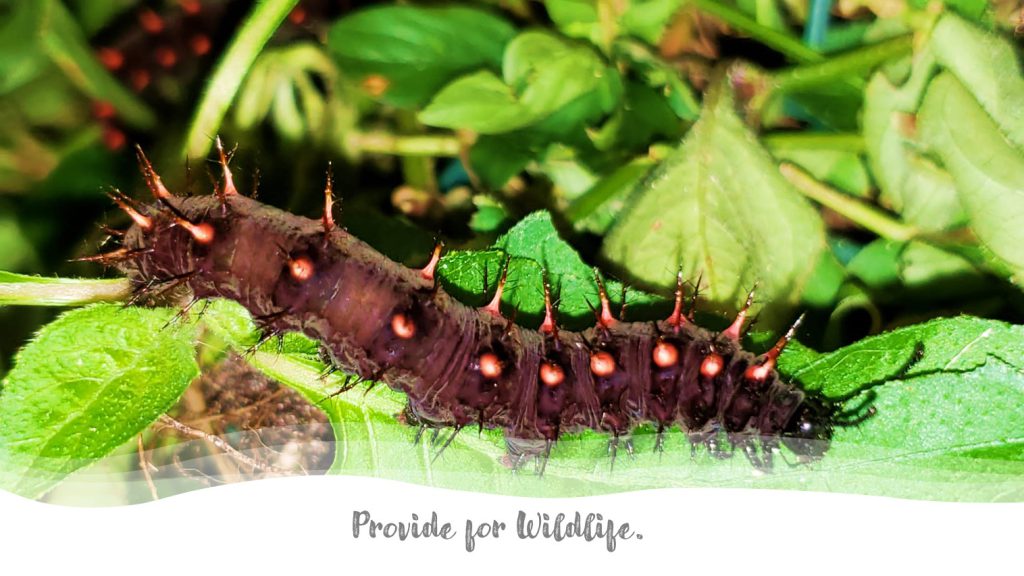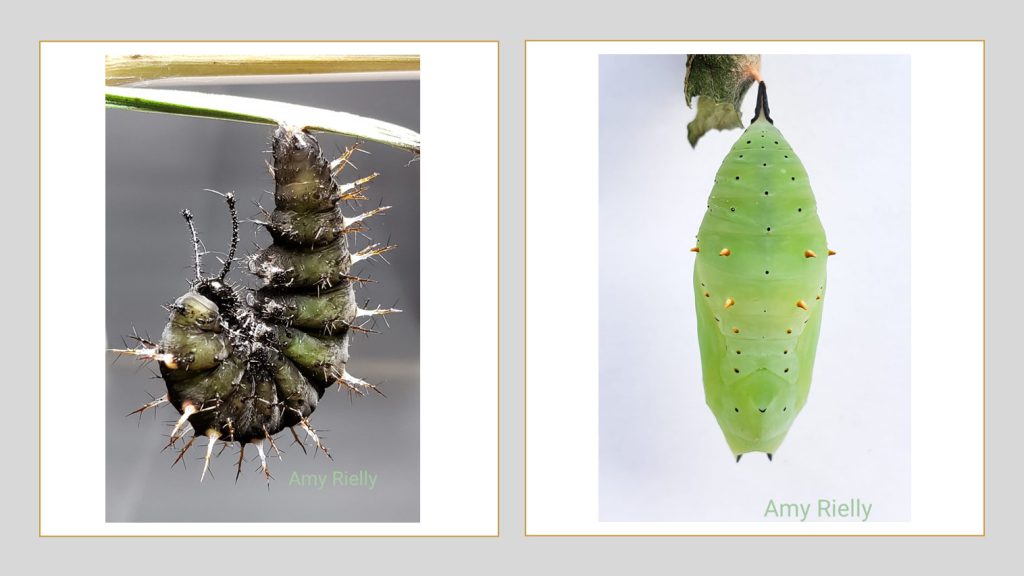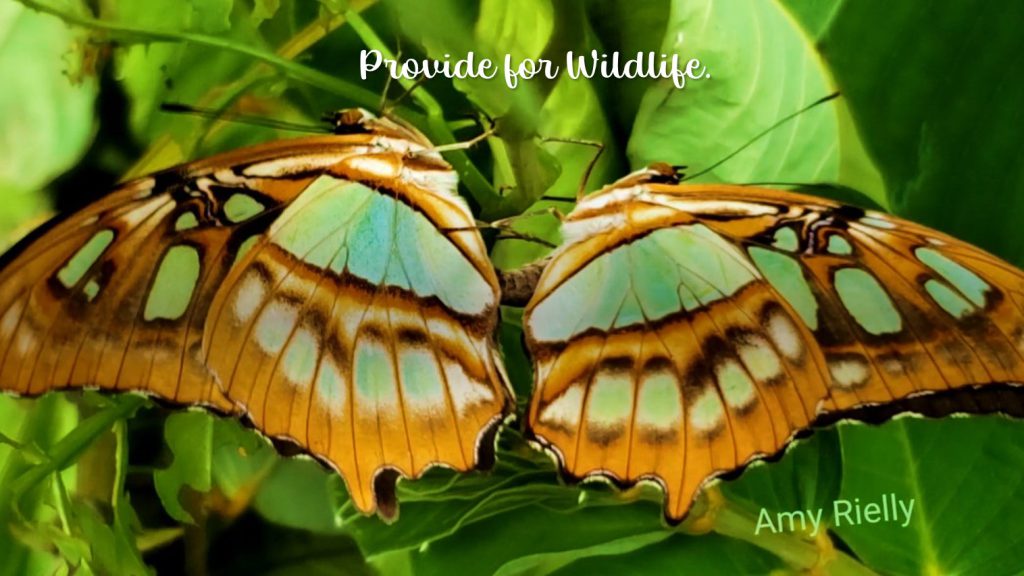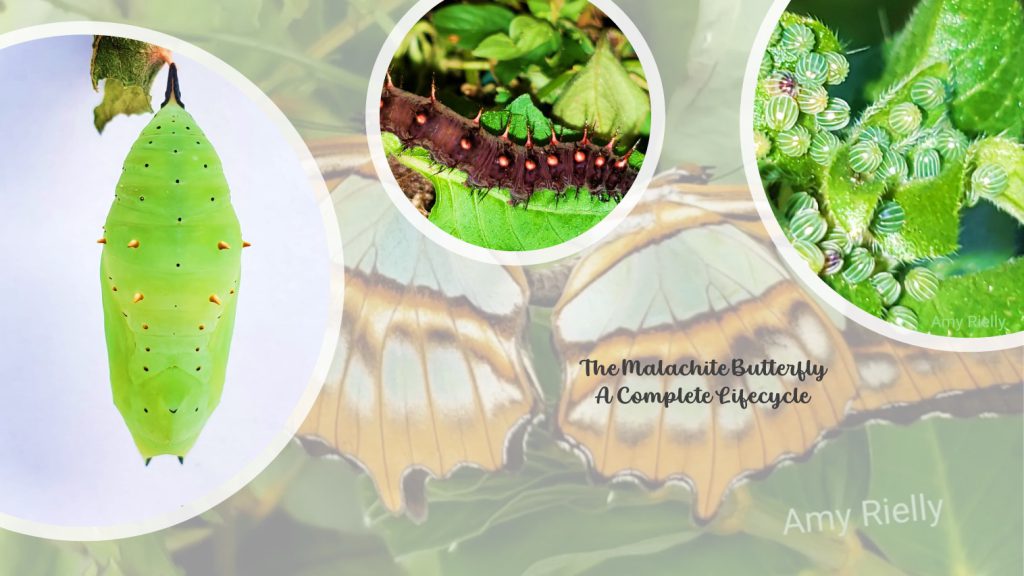Article by UF/IFAS Extension Broward County Urban Horticulture Agent Lorna Bravo
Our urban yards are the first line of defense to protect local wildlife.
Have you ever thought about what happens when a native wooded area is cleared for a building site? What happens to the creatures living in or visiting this area when the trees and undergrowth are removed? The insects that fed on plants growing in the woods are gone. The birds no longer have a reason to look here for food like caterpillars and other insects because their food plants are gone. If you want to have bees, butterflies, birds, and more visit your garden, you must support their food life cycle. As urban areas rapidly increase worldwide, our urban yards are the first defense line preserving Florida’s fragile environment. How do we do this? Invite plants with nectar sources in your yard—select plants with seeds, fruit, flowers, or berries. This month we are featuring the malachite butterfly and its beautiful life cycle.
The Malachite Butterfly
The Malachite, Siproeta stelenes, is named for that striking mineral containing copper carbonate, prized for its rich green color. A medium-sized butterfly with a wingspan of 4 inches, having dark brown, green spots and splotches when wings open; with translucent whitish-green to yellowish-green patches with wings closed; some undersides showing orange-brown or gold with greenish scales. The wing’s tails are short vs. the longer wing tails of swallowtail butterflies. The sexes are similar, although females are slightly larger.
Did you know it’s a common long-lived butterfly in deciduous forests throughout Central to northern South America? Since the 1960s, however, the butterfly has come to the tip of Florida, probably arriving from Cuba. The numbers have declined recently, although they’ve been found in Broward, Collier, Hendy, Lee, Manatee, Miami-Dade, Monroe, Palm Beach, Pinellas, and Sarasota counties, with strays all-the-way-to southern Texas.
The Malachite Eggs
After mating, the female Malachite butterfly lays her green eggs singly by the females on the newest growth of the host leaves or flowers.
What does the Caterpillar look like?
The larvae or caterpillars are horned, spiny, and black with red markings.
How do they protect themselves against predators?
Chrysalis or pupa stage color is green, with sharp gold spines that, look out, can puncture predators.
What is the secret to their visit?
Butterflies are found in forest margins to citrus groves and overgrown plantations feeding on diets of nectar, rotting fruit, bird droppings, dead animals, and bat dung. The eggs are laid singly by the females on host leaves or flowers of the Green Shrimp plant, also called Browne’s Blechum, species Reullia blechum L., native to Mexico, Venezuela, Bolivia, and the Caribbean that’s listed as category II, on the invasive Florida exotic species list.
What is the UF/IFAS Assessment of Non-native Plants in Florida’s Natural Areas?
The UF/IFAS Assessment of Non-native Plants in Florida’s Natural Areas uses literature-based assessment tools to evaluate the invasion risk of non-native species in the state, new species proposed for introduction, and novel agricultural and horticultural selections, hybrids, and cultivars.UF/IFAS Assessment – University of Florida, Institute of Food and Agricultural Sciences (ufl.edu)
UF/ IFAS Assessment recommends the green shrimp plants be used with caution in South Florida.
- green shrimp plant, Ruellia blechum L.(IFAS Assessment says this plant should be used with caution in North, Central, and South Florida; this means that plants should be managed to prevent escape) Ruellia blechum – UF/IFAS Assessment – University of Florida, Institute of Food and Agricultural Sciences (ufl.edu)
Do you want to invite this beauty into your yard? Plant a Native Option
Interestingly, it uses another host plant. We have a native wildflower choice, Carolina wild petunia, Ruellia caroliniensis. Request it at your native growers, plant it, and invite the Malachites to visit your yard! Carolina Wild Petunia – Florida’s Wildflowers & Butterflies (ufl.edu)
Fun Facts
Did you know the Malachite butterfly is so-named because of the pale green translucent patches visible on the upper sides of its wings? Malachite is a semi-precious green gemstone.
The Malachite Butterfly Full Life Cycle
Watch this fascinating video of the complete life cycle of the Malachite butterfly created by UF/IFAS Extension Broward County Master Gardener Volunteer Amy Rielly. Understand what the eggs look like, the caterpillars, and the adult butterfly stage to be able to identify them in your landscape. The video has extra footage of its full life cycle and signature colors as it grows.
Provide for Wildlife
Learn about our Florida-Friendly Landscaping program and its nine principles. Contact our Broward Extension office for a list of plants you can invite in your yard to support wildlife and consider recognizing your yard as a Florida-Friendly Landscape.
Interested to have your yard recognized as a Florida-Friendly Landscape?
The Florida-Friendly Landscaping™ (FFL) program is an educational outreach program informing homeowners and professionals how they can be more environmentally friendly with their landscape care practices. Its mission is to educate Floridians about science-based, environmentally friendly landscaping practices and encourage them to conserve and protect our water resources by applying its nine principles. Recognizing the home landscape as part of a more extensive natural system will help us make sound decisions in creating a Florida-Friendly yard and help protect Florida’s natural environment for future generations. Interested to have your landscape recognized under the nine FFL principles? You can watch our local Broward County FFL presentation here: Florida-Friendly Landscaping™ in Urban Environments – YouTube
Contact UF/IFAS Extension Broward County Florida-Friendly Landscaping Program.
Email: Lorna Bravo lbravo1@ufl.edu or Anthony Gross @anthony.gross@ufl.edu.
Resources
You can read more about The Malachite butterfly and host plants here:
- Malachite – Florida’s Wildflowers & Butterflies (ufl.edu
- Carolina Wild Petunia – Florida’s Wildflowers & Butterflies (ufl.edu)
- Green shrimp plant – friend or foe? – UF/IFAS Extension Charlotte County (ufl.edu)
- Ruellia blechum – Species Page – ISB: Atlas of Florida Plants (usf.edu)
- IRC – Natives for Your Neighborhood (regionalconservation.org)
by lbravo1
Source: UF/IFAS Alert – https://blogs.ifas.ufl.edu/

